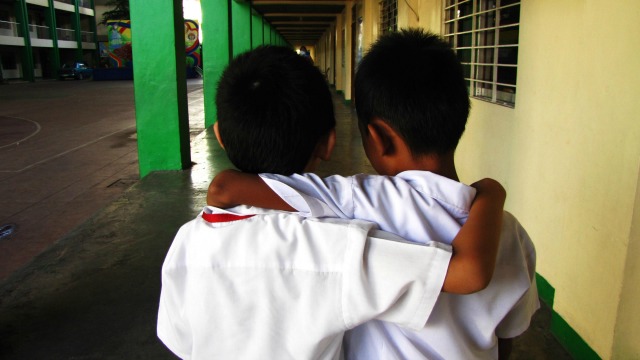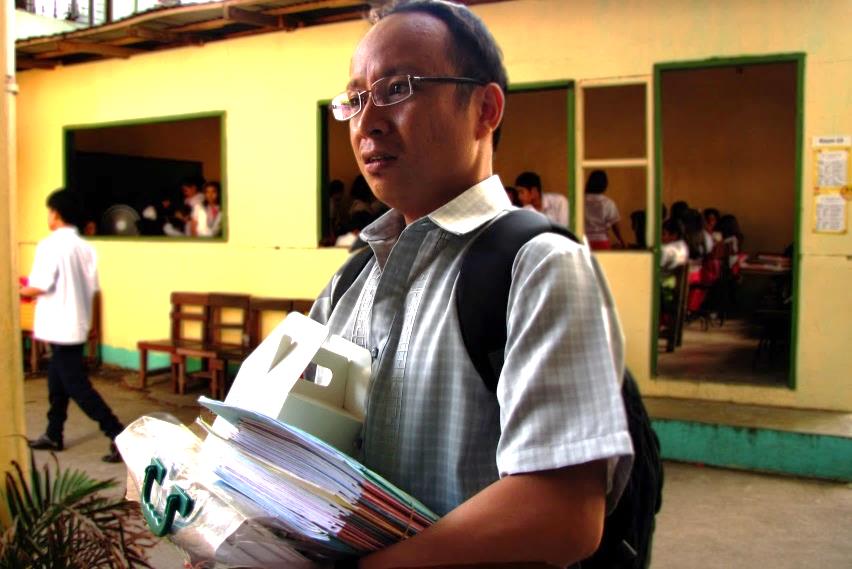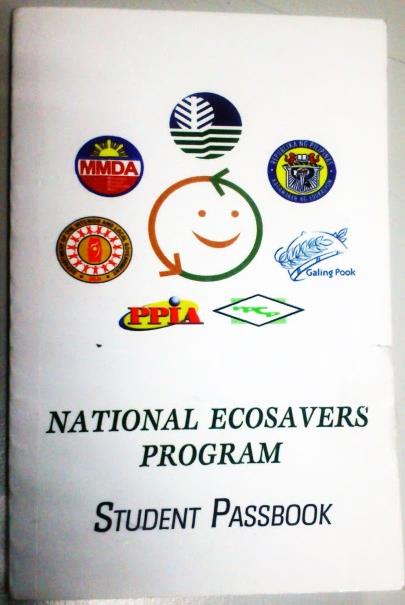Filtered By: Opinion
Opinion
In two schools, student ecosavers and multi-tasking teachers save the day
By LILA RAMOS SHAHANI
(Updated 1:56 p.m., July 9) Every year, as students trek back to their classes anew, we are reminded yet again of the troubling quality of our many public schools. Balik Eskwela is a season when suggestions and criticisms of all types flood the Department of Education (DepEd) from all sides.
Poverty is rightfully tagged as the main issue, but what does poverty look like from school to school, at least in the public sphere?


It is the poverty of each school — not to mention each student — that must be addressed if we are to meet our goals for national education. Photos by Lawrence Joy dela Fuente
This is an important question, because it is the poverty of each school—not to mention each student—that must be addressed if we are to meet our goals for national education.
Poverty happens everywhere, but poor students are poor in different ways and for different reasons from place to place: The same, too, is true of individual schools and their respective districts. Ideally, education could be instantly improved by a blanket policy that can simply be funded and applied, but the truth is that both students and schools face critical issues in distinct ways.
Already, DepEd has built 66,813 new classrooms since December 2013—clearing the backlog of the previous administration almost entirely—but still faces enormous challenges ahead.
For now, they are all-too-keenly aware that a boost in the 2014 budget of P15 billion for classrooms would speed up the implementation of programs and projects currently in place—classrooms being built, and those that are planned and projected for the future. But DepEd’s commitment and sense of purpose, combined with the grit and tenacity of many public school communities, continues to work wonders on the case-to-case basis these individual situations require.
Despite funding limits, DepEd has strengthened its position by converging with numerous stakeholders—parents, community organizations, Local Government Units (LGUs), the Department of Social Welfare and Development (DSWD), and even the Department of Environment and Natural Resources (DENR).
To see how this works in real terms, we need look no further than at two public schools in Metro Manila—at stories that demonstrate the creativity of teachers, students and entire communities to offer the next generation the best education and future possible.


Potrero National High School, with only 13 classrooms, caters to 1,800 students by doing classes in two shifts.
Potrero
Tucked inside a posh subdivision, surrounded by trees and sumptuous residential homes, Potrero National High School is practically a community eyesore. To many homeowners in University Hills, Malabon, the high school is an obstruction at best, an annoyance at worst.
A public school inside a subdivision certainly poses many challenges: the noise and endless stream of children running around, not to mention issues of space and security. On the other hand, the students are very socially aware, since most Potrero students don’t live in subdivisions as affluent as University Hills.
With only 13 classrooms for an entire population of 1,800 students, Potrero High has already split its hours into early morning and afternoon shifts in an effort to accommodate everyone.
Rooms often appear in the most enterprising, if unlikely, spaces: Some teachers work under a school staircase because the faculty room is too small to house them. Elsewhere, makeshift rooms have been fashioned out of two laboratories and a comfort room area.


Renato Lacon has to juggle being a registrar and a Technology and Livelihood Education (TLE) teacher due to lack of administrative staff in Potrero National High School.
As if these spatial challenges were not enough, some students never get to use the school’s computer laboratory in all their high school years. Rica Doron, 4th year student at Potrero High, says that this is due to a lack of facilities that can cater to such a huge student population.
In spite of all this, some teachers are known for exerting herculean efforts to bridge these gaps, often performing more than one function at any one time. Renato Lacon, a bespectacled and unassuming Technology and Livelihood Education (TLE) teacher, doubles up as the school registrar. His days are fully consumed with classroom duties and administrative work so that, on difficult days like today, he doesn’t always know which tasks to prioritize first.
Marikina
This gritty sense of determination can be observed elsewhere, in the distant Marikina Elementary School.
Last year, the parents’ association augmented the meager feeding program budget of the school with enthusiastic efforts at solicitation.
Because of inadequate funding for the school’s malnourished kids, they took it upon themselves to help shoulder some of the necessary expenses.
The government hand
In the face of these many initiatives, the government has responded by providing badly-needed resources wherever possible. DepEd has also creatively tried to address the perennial problem of overcrowding: Students are sometimes transported to less crowded schools during the day, and marginalized students are provided with alternative modes of learning.
They have also collaborated with the local government, private sector, and other stakeholders to reduce the number of highly congested schools in the National Capital Region—from 120 schools at the start of 2011 to just 20 schools today. As a result, they were able to reduce schools that implement 3-shift classes from 192 in 2011 to just, impressively enough, one school this year.
In Potrero High, nine new classrooms are being built this year alone.
In Marikina Elementary, both the DSWD and LGU launched a targeted feeding program for students. This was part of nationwide campaign with a P1 billion budget.


The National Ecosavers Program passbook
An even more exciting development: At Marikina Elementary, teachers, students and parents have been able to convert waste materials to cash. The National Ecosavers Program (NEP), led by DepEd and DENR, has helped this community profit from, of all things, recyclable materials. Students bring recyclable goods to school and they are sold to junkshops for a fee. All transactions are meticulously recorded in a passbook to account for every centavo.
Eight-year-old Samantha Getican was able to earn P1,000 from the biodegradable materials she brought to school. The money she earned financed her school field trip last year, while the remaining amount is for her school supplies this year.
Speaking in a tiny voice, there was pride in her words as she recalled how she had become one of the top “recyclers” in her entire school, and how her parents felt about her achievement.
All told, 5,313 kilos of recyclable material have been generated by the Ecosavers program alone. In terms of funding, this has translated to as much as P50,000-P60,000.
But the challenges ahead remain formidable. This year alone, DepEd has yet to construct at least 10,000 more classrooms throughout the country in preparation for senior high school.
In the meantime, these impressive individuals—and the vibrant communities around them—are determined to push for change in all our public schools, even if these changes mean beginning little by little, often one school at a time.
Assistant Secretary Lila Ramos Shahani is Head of Communications of the Human Development and Poverty Reduction Cabinet Cluster, which covers 26 government agencies dealing with poverty and development. She would like to thank Sarah G. Crespo for her assistance with this piece. The opinions expressed here do not necessarily reflect the views of GMA News Online.
More Videos
Most Popular




